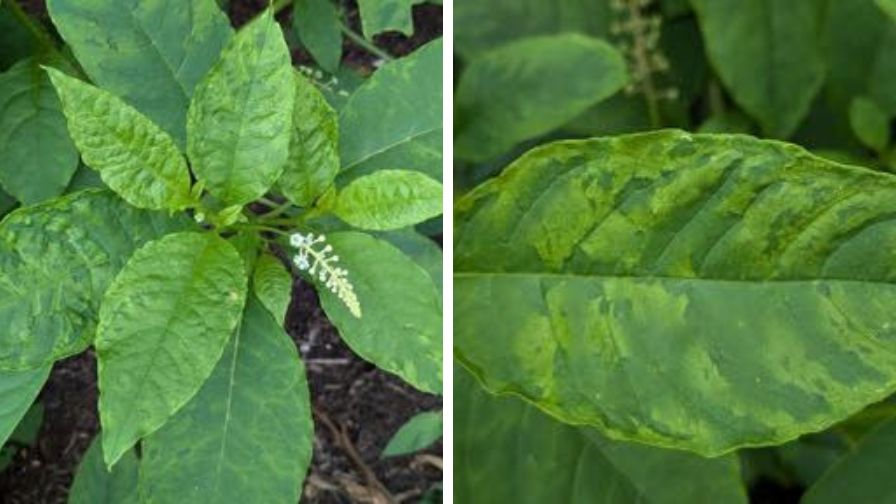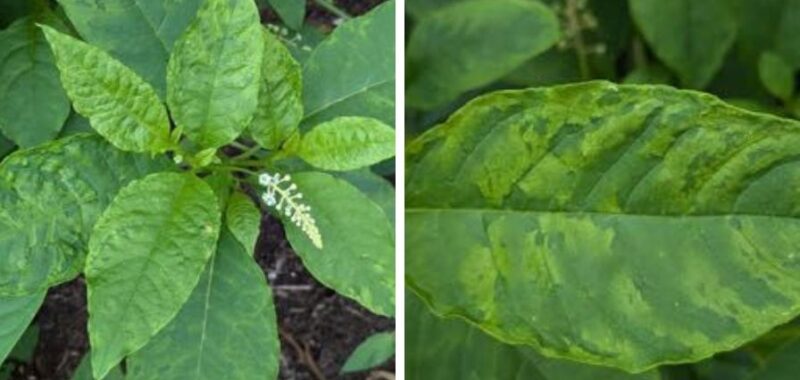
Mottling pokeweed leaves growing outside of a greenhouse | Brian Whipker
Brian E. Whipker and Patrick Veazie of North Carolina State University recently scouted out their greenhouse to take stock of everything in preparation for the coming winter months. The outside beds of their greenhouse are present to pokeweed (Phytolacca americana), a hardy perennial that produces a fruit that is poisonous to humans and many other animals, but are a favorite for birds. Here, the pair noticed the presence of mottling on pokeweed leaves, a common symptom of infection and necrosis.
Therefore, the next step was figuring out the cause and rectifying it to prevent overwintering problems throughout the next few months.
Virus Proliferation in Pokeweed and Other Plants
The initial assumption for a diagnosis of the pokeweed and the cause for its mottling was that of Impatiens Necrotic Spot Virus (INSV) or Tomato Spotted Wilt Virus (TSWV), two of the most common greenhouse viruses. However, testing for both viruses was negative.
Other hypothesized options for infection of the pokeweed include the Tobacco Mosaic Virus (TMV), which is mechanically transmitted, whereas INSV and TSWV are “thrips vectored.” Additional methods of viral infection spread include being carried by whiteflies or aphids, creating many options for transmission.
Whipker and Veazie stress that viral outbreaks in greenhouse plants can be extensive, necessitating a close eye and preventative measures. Citing an outbreak of TSWV in North Carolina during the 2022 growing season, the primary vector of infestation was found to be tobacco thrips.
“These thrips can overwinter in the Eastern part of the state and readily feed on both tobacco and weeds along the edge of the field. This provided the viral source and the vector was able to infect the following year’s tobacco crop.”
Broadleaf Weed Control in Greenhouses
Even without a proper diagnosis of the undetermined virus in the pokeweed, Whipker and Veazie lay out the next steps to take regarding control measures. After scouting inside and outside of a greenhouse, identify broadleaf weeds with virus-like symptoms, including:
- Distorted growth
- Mottling
- Ringspots
From there, the removal of weeds or spraying with a contact herbicide is a way to prevent the virus from becoming a problem during overwintering and emerging again in the new year.
For more information regarding overwintering disease control measures in weeds, please read the full e-Gro (Electronic Grower Resources Online) alert “Poking Around the Greenhouse.” Additional and current e-Gro alert pieces from Volume 13 (2024) can be found online.

